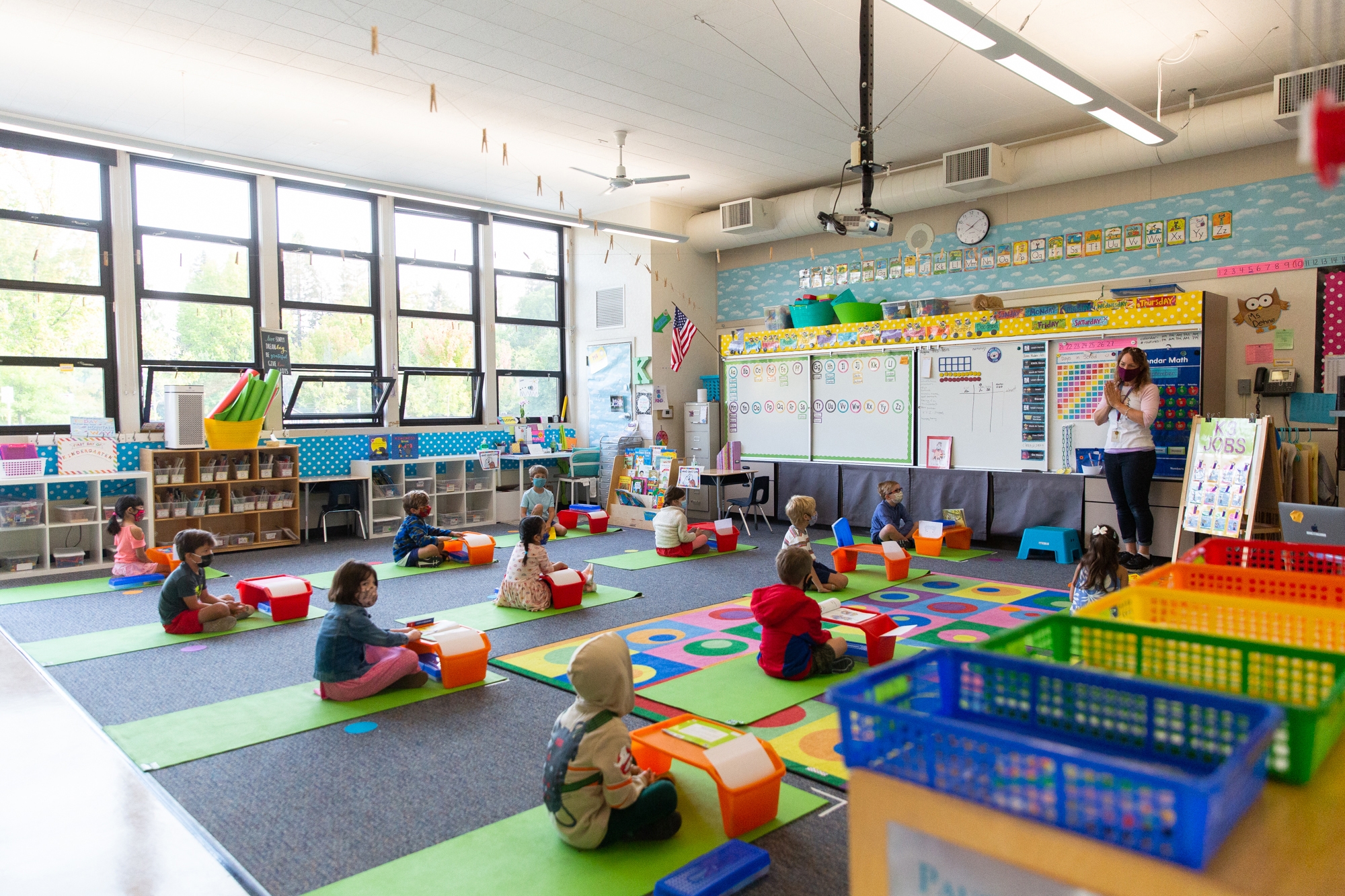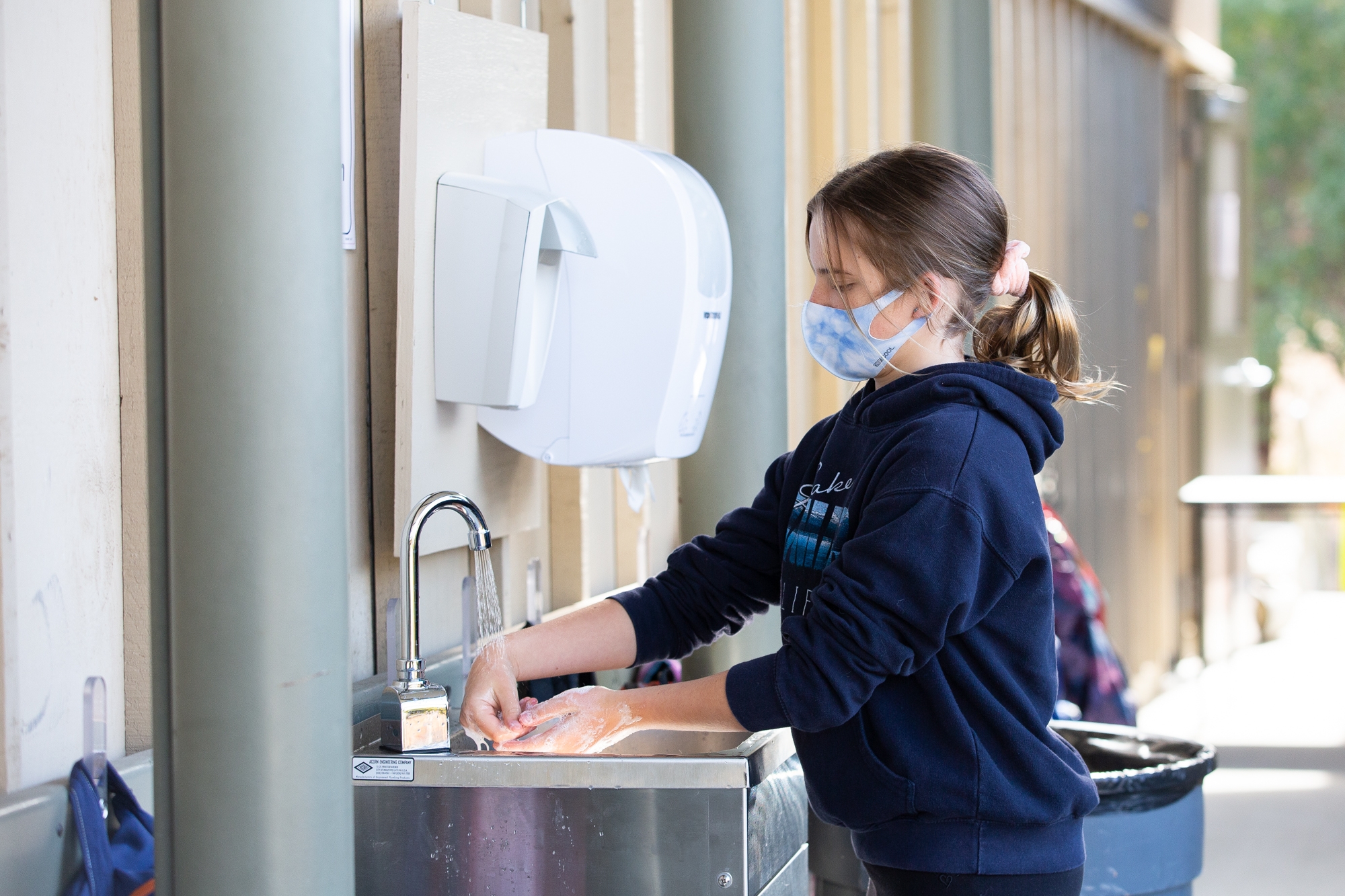It costs a lot to reopen a school during a pandemic. Local elementary school districts have reported spending hundreds of thousands of dollars — even millions — to safely bring students back to campuses.
It cost nearly $1 million to reopen Portola Valley School District classrooms this fall, according to the district. The bulk of the money — over $580,000 — went toward staffing increases. The two-school, 495-student district hired three additional teachers to meet the required small cohorts needed for on-campus learning and to offer a virtual academy option to families who are not comfortable returning for on-campus learning, said Connie Ngo, the district's chief business official, in an email. The district also contracted with three substitute teachers instead of hiring day-to-day subs as in past years, to avoid substitutes mixing in with other communities, she said. The district hired an additional instructional aide, and the school nurse increased from working just one day a week to three.
More than $118,000 went into health and safety measures: sanitation supplies, masks, gloves, face shields, HVAC air filters, hand-washing stations, tents, thermometers and other supplies, said Ngo. Curriculum costs totaled about $33,000 for online curriculum, student supplies and to use Edgenuity, a K-12 online platform for virtual learning.
Nearly $73,000 went into technology costs like new devices and Chromebooks for students, hot spots for families, additional teaching software and Zoom upgrades.
The district received about $300,000 from local, state and federal sources to cover COVID-related costs. Of that, the Portola Valley Parent-Teacher Organization and Portola Valley Foundation covered about $115,000 of the additional costs, according to the district.
The Woodside Elementary School District, which has 372 students, saved close to $1 million in expenses last spring while students were distance learning, according to Superintendent Steve Frank. But this fall it has taken on half a million dollars in costs for new COVID-related safety precautions, which include the administrative costs of testing staff members weekly, HEPA air filter installations, building outdoor classrooms and hiring additional substitute teachers to oversee more fragmented student groups.
The school also installed 50 hand sanitizer stations and four portable outdoor hand-washing sinks.
The district received $180,000 in Child Care Relief Fund grant funds from San Mateo County to help county schools that have been adversely impacted by COVID, Frank said.
Despite the costs, school officials have accomplished their goal of getting kids back to school safely, he said.
The Las Lomitas Elementary School District, which has 1,111 students, received $519,612 in state and federal learning loss mitigation funds, said Superintendent Beth Polito in an email. The money was used to provide internet connectivity and devices for students during virtual learning, additional instructional materials for students to have at home, an additional three days of professional development for staff, and personal protective equipment, Polito said.
An example of the increased costs: material and supplies costs rose from about $680,000 last school year to about $1.4 million this school year, according to the district's interim 2020-21 budget.
The 2,932-student Menlo Park City School District invested $2.9 million on reopening costs, which included over $600,000 for additional teachers and substitute teachers, about $570,000 for playground support and teachers aides, and $220,000 for COVID testing, according to a district budget document. Of that, $1.5 million came from local, state and federal funds.
"The financial costs to the district continue to impact the short and long term budget planning for the district," something set for discussion at the next board meeting on Dec. 17, according to a Dec. 3 Menlo Park district school board presentation. "While the right thing to do, reopening does impact the district financially, even with the support of CARES Act (Coronavirus Aid, Relief, and Economic Security) funds."
The Palo Alto Unified School District's 2020-21 interim budget update shows COVID expenditures, and associated safety protocols, are costing the district $4.8 million. (The costs of COVID in the budget are not itemized.)
Portola Valley district's budget bind
The Portola Valley district is especially in a bind with increasing COVID costs.
In March, voters failed to renew Measure P, a parcel tax that raised $1.2 million annually for the district. It expires on June 20, 2021. If there isn't a renewal before June, the district must make plans for spending reductions.
"Given the current state of the pandemic environment, most importantly not knowing when schools will be able to resume normal operations, and the possibility of additional staffing needed to maintain small cohorts, the administration recommends postponing further budget reductions, $500,000 of ongoing expenditure reductions until 2022-23, and an additional $500,000 in 2023-24," a staff report for the Dec. 17 school board meeting states.





Comments
Registered user
Portola Valley: Westridge
on Dec 30, 2020 at 12:41 pm
Registered user
on Dec 30, 2020 at 12:41 pm
And I am wondering why there were no savings of usual expenses reported for Portola Valley Schools.
Registered user
Woodside: Skywood/Skylonda
on Dec 30, 2020 at 6:23 pm
Registered user
on Dec 30, 2020 at 6:23 pm
Further to kblocker’s excellent question, I would like to know
a) why three full time subs are needed and independent of that
b) it costs $100k per person to add six people to the payroll for the fraction of a year left before everyone is vaccinated.
Oh, and c) why does the almanac reporter not ask any of these obvious questions?